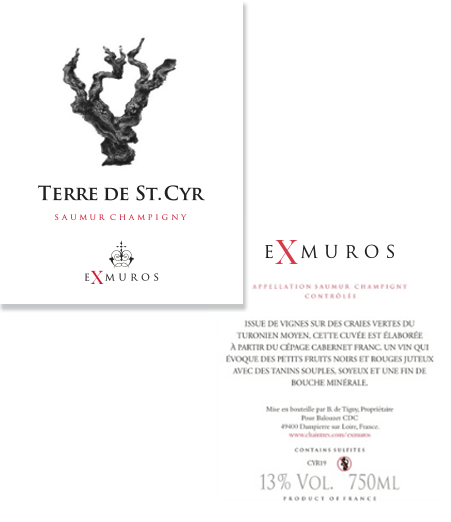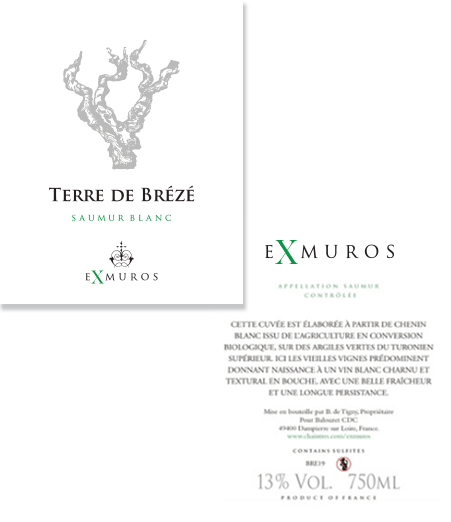

EXMUROS wines come from old vines (+40 years old) close to our estate. White, 100% chenin from the village of Brézé, red, 100% cabernet franc from the village of St. Cyr.
These two well-known villages already produce some of the best wines in the region. Oriented other than the terroirs of the Clos du Château, the plots that give us the EXMUROS wines have a unique ability to produce rich and balanced wines, because they are endowed with clay-limestone terroirs. The clays, here deep and rich, are warmed by direct exposure to the sun, and placed on a tufa fault called «green» because it is of a different era and formation. The resulting wines have a distinct character from those produced in the vineyard of the Château de Chaintres. It is not surprising that there have always been very good wines produced in these villages, since at least the Middle Ages.


TERRE DE ST. CYR, AOC Saumur Champigny
Terre de St. Cyr, AOC Saumur-Champigny, whose vines are in the second year of organic conversion (certified AB in 2021), is a wine of pleasure while having a surprising complexity. Ripe red fruits and small black fruits mingle in the mouth with a spice that supports the whole. The connoisseurs of Saumur-Champigny would be surprised by the power of this wine, a reflection of the deep chalk and the generous sun that defines its vineyard.


TERRE DE BRÉZÉ, AOC Saumur Blanc
Terre de Brézé, AOC Saumur Blanc, organic wine (certified AB in 2020), is rich in white fruits, and ample in the mouth, with a citrus weft present throughout the tasting.
Why?
The terroir of Chaintres, and Saumur in general, is defined by the local chalk that forms the geological base of our vineyard, known locally as the tuffeau. This chalk, remains of an ancient Jurassic sea (or Cretaceous, in some places) is now exposed and eroded throughout our region. The roots of our vines dig into this very porous rock rich in water reserves and minerals. Supported by this mother rock, the terroirs of our region vary and, consequently, the wines too.
The Château de Chaintres has a major asset, which is its clos. Of monastic origin (1675), the clos, walled, creates a micro-climate, a terroir whose wines are intimately linked. This clos is the basis of the definition of all the wines of the Domain.
Driven by the desire to expand the range of wines of the Domain but also to venture into terroirs, and therefore wines, different from those from the vineyards of Chaintres, Elisabeth de Tigny, owner and general manager of the domain, decided to seize an opportunityoutside our walls.


